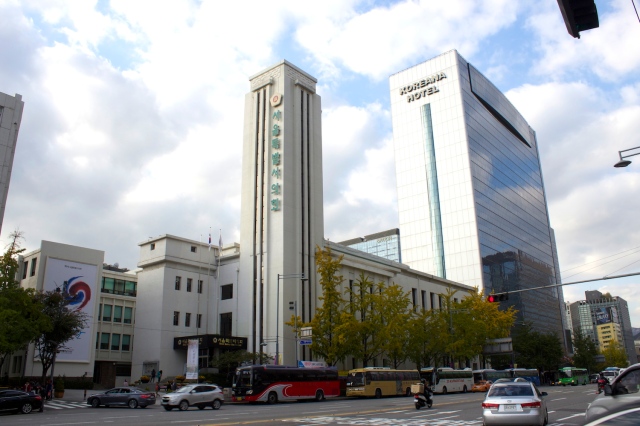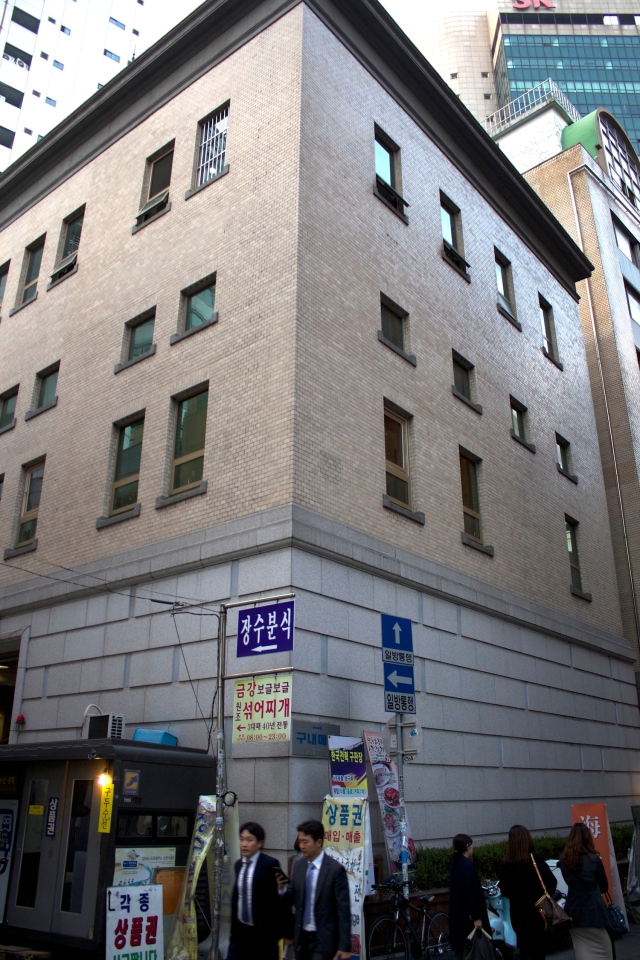In 1910, Imperial Japan annexed Korea forcefully, culminating a process that began with the Meiji Emperor in 1876. The Joseon capital of Hanseong was renamed 京城 – read as “Kei-jo” in Japanese, and “Gyeongseong” in Korean – and designated the colonial capital. Literally, the word meant “capital”.
During their colonial rule (1910 – 1945), the Japanese destroyed many of Seoul’s indigenous Joseon architecture, including much of the Gyeongbukgung. In place of the mediaeval city, they inscribed a European-inspired, totally rational urban plan of broad boulevards, grand vistas and monumental civic buildings: buildings such as the controversial former Government General Offices, demolished in 1995.
Today, much of colonial Seoul has vanished, demolished and built over by a city keen to get over a particularly difficult period of its history – the Japanese were brutal colonial masters and attempted to systematically eradicate Korean culture and replace with it with the Japanese.
But around downtown Seoul, some instances still remain of the Keijo era – in some cases, just barely. The Keijo City Hall, for example, was literally in the midst of being torn down when the Cultural Heritage Department of the city declared it a protected site and halted demolition.
Keijo also remains in the urban fabric of the city – in the many low-rise front-facing stores that remind one of the same in the (Imperial) cities of Tokyo and Kyoto. And also in how modern-day Seoul (like modern-day Tokyo) is a towering city of glass and steel.

The Bank of Korea Building (1912) is built in a typical Meiji Imperial Architecture. It resembles the Bank of Japan in Tokyo.

The Old Woori Bank Building was built in 1909 and is one of the oldest colonial buildings in downtown Seoul.













